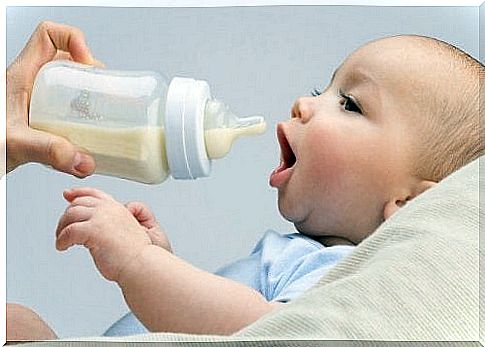How To Choose Formula 1 Milk?

The arrival of a new member of the family brings joy, doubts and challenges. Newborns need to eat every few hours, either breast milk or formula. But how are these milks different?
Official Recommendations
The World Health Organization (WHO) recommends exclusive breastfeeding on demand for the first six months. After this time, it is recommended to gradually introduce other foods while breastfeeding up to two years or more.
Official data on breast milk and formula milk
A study by the Journal of the American Dietetic Association analyzed the changes in attitude towards feeding in newborns between 1999 and 2003. The data obtained showed that 25% of those surveyed considered formula milk as good as milk. maternal. This result represented an increase compared to the 14% recorded in the same study in 1999.
According to data from the National Institute of Statistics, in Spain breastfeeding predominates over artificial or mixed during the first three months of life. The trend changes at six months, when only 24.72% maintain natural lactation. At this time, artificial breastfeeding is gaining popularity, accounting for 61% and mixed breastfeeding with 14%. This change is possibly due to the incorporation of women into the work environment.

Characteristics of breast milk
It is a living fluid that changes and adapts to the needs of the baby. The milk of the first days is known as colostrum, and it has a yellow color. This milk contains everything you need for the first days. Afterwards, the fluid becomes whiter, is produced in greater quantity and has a lighter texture. This is known as mature milk.
Breast milk contains everything necessary for the growth of the newborn. In addition to providing macronutrients and micronutrients, it contains other compounds that promote the development of the newborn’s immune system.
During the lactation period, the mother can eat everything (except alcohol), and has to consider that her caloric needs continue to be increased, so it is not the time to carry out caloric restrictions. One of the biggest fears that infants who need to take medication often show is whether the drugs affect the quality of their milk. There is a web page where you can check if the medication is compatible with breastfeeding.
Formula milk characteristics
Infant milk contains everything necessary for the growth and development of the newborn. All are safe and are regulated by Regulation (EU) No. 609/2013.
Regarding its composition, there is no standard composition; each commercial house has its own. In general, they have a higher protein content than breast milk, and they tend to contain a higher proportion of micronutrients, such as vitamins and minerals. This happens because, despite having more nutrients, they are less bioavailable by the human body than those of breast milk.
On the other hand, one of the drawbacks of artificial feeding is that babies sometimes eat more than they need. The reason behind this statement is that the effort required to eat through a nipple is less than that of sucking on the mother’s breast. Even so, each baby grows at its own pace and must be respected.
What to take into account when choosing one milk or another?
Breast milk and formula milk differ, above all, in the amount and type of protein they provide and in the way in which carbohydrate is provided, as can be seen in the table.
When choosing a formula milk you have to look at three things:
- The amount of protein and the ratio of casein to serum protein, the two main proteins in milk.
- The way in which carbohydrates are supplied. Lactose predominates in breast milk and should be sought in formula milk. In addition, syrups or maltodextrins must be avoided in the composition of artificial milk.
- Fat sources. Palm oil is present in breast milk and, despite being an unsustainable choice, it is nutritionally safe.
Regardless of the breastfeeding method chosen, it must respect these pillars:
- Both must be exclusive for up to six months and on demand.
- The rhythm is set by the baby.
- It is not surprising that sometimes they take less than others and, above all, they do not have to be forced.
- Each baby follows his own growth rate.










